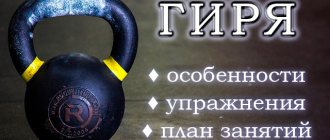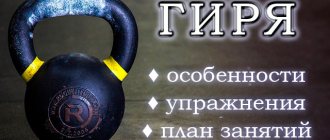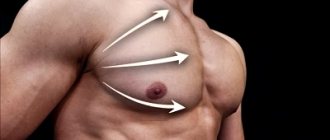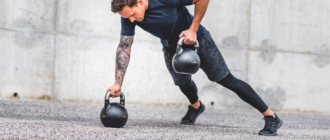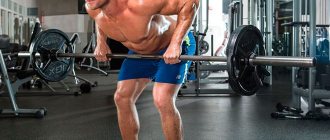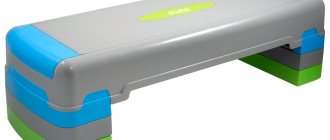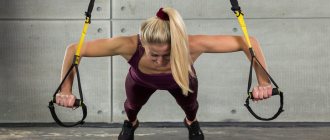A medicine ball is a weighting device weighing from 1 to 20 kg, which is used for sports and rehabilitation training. Medicine balls are increasingly being purchased for exercise not only in fitness rooms, but also at home.
The weighted ball has been known since time immemorial, because shells similar to it were made by the ancient Greeks and Persian warriors. They used balls filled with sand and made from animal skin to improve their strength and agility. Later, Hippocrates found use for such balls in the field of rehabilitation after war injuries, since this projectile exerted minimal pressure on the joints.
So, what is a medicine ball, what is its benefit and what do you need to know when buying this sports equipment?
What is a medicine ball and what is it for?
A medicine ball or medicine ball for fitness and crossfit is a multifunctional equipment made of durable weighted material, the weight of which can be from 1 kg to 20 kg, depending on the manufacturer.
Medicine balls are often used in functional training, CrossFit, and personal training in the gym. The weight and density allows you to use the ball not just for weights, but also for balance exercises that develop deep muscles that are not involved in exercise machines. The dense material will not allow the ball to burst or tear under the influence of body weight, so you can do push-ups, rolls and even squats on the ball.
Popular models
Medicine ball 2 petals.
Medicine balls are a lace-up medicine ball with increased weight and no rebound from the surface, made of high-quality genuine leather with a thickness of 1.54 - 2.0 mm. Rubber crumbs of various fractions are used as filler, which prevents the sports equipment from getting wet when used in damp or unheated rooms. A nylon cord is used for lacing. Medicine ball EFFORT Medicine balls are used for training in various types of martial arts, as well as for gymnastic and therapeutic exercises. Made from high quality genuine leather filled with crumb rubber.
Medicine ball for athletic exercises Ball for athletic exercises Leco 2230 rubber. Whiteball in a game form allows you to develop endurance, dexterity and coordination of movements. Characteristics: diameter, cm - 23, color - orange. The shell is made from the same material as a basketball. The surface of the shell has pimples.
Gymnastic medicine ball MASTER In addition to the tarpaulin cover, the balls are completely glued and stitched from the inside with dense, high-strength fabric. This duplication of the ball cover significantly increases the quality and durability of the product.
How to choose a medicine ball
Medicine balls are made of durable materials (rubber, PVC, leather) that do not allow the ball shell to burst. The most wear-resistant material is dense rubber with small pimples that do not allow the ball to slide on the floor surface and, accordingly, prevent injuries.
You also need to choose a ball based on weight, which depends on the ball’s filling (sand, gel, crumb rubber). You need to choose the weight based on the complexity of the exercises performed and physical fitness.
- If the purpose of using the ball is to weigh down, then beginners should choose from 3-5 kg of weight.
- More prepared athletes need a weight of 10 kg and above.
Medicine balls for crossfit can be with a handle , like a kettlebell, such a ball will allow you to perform most of the exercises of this workout, it is also important to choose the weight suitable for certain exercises.
A little history
The medicine ball can be called the progenitor of weights and dumbbells, as well as other types of weights. Bags/balls made of leather filled with sand were used by warriors and athletes of the ancient world (Greeks, Persians, Romans) to train strength and agility.
But initially the projectile found widespread use in rehabilitation after war injuries, which is why the name for this ball was assigned - medical. It is believed that Hippocrates also used a medicine ball when restoring soldiers, since a medicine ball puts minimal pressure on the joints and also allows you to gently work out injured muscles and ligaments during the rolls.
Medicine Ball Manufacturers
- Reebok. The manufacturer offers a line of cast rubber balls weighing from 1 to 5 kg. Also, for crossfit lovers, medicine balls with Double Grip Med Ball handles are available, weighing 6, 8, 10 kg.
- Adidas. The brand produces medicine balls made of black cast rubber with the brand logo, weighing 1, 3, 5 kg.
- MONKO. Balls weighing 3, 6, 9, 12 kg. The shell is made of PVC, matte non-slip surface with double seams, hand lacing.
- Reyvel. The balls are stuffed with crumb rubber, well stitched and of high quality. The line is available in weights from 1 to 5 kg.
Throwing a medicine ball at a wall
In this case, almost the entire power of the body is involved in the work. In addition to developing endurance, speed and strength, calories are actively burned, which can be a good help in losing weight for those suffering from excess weight.
Taking the ball in your hands at chest level, stand 1 meter from the wall. It is necessary to perform a deep squat and, as you exhale, push the medicine ball diagonally up into the wall, when you catch the ball, perform a full squat again and repeat the exercise 10-15 times. After a short rest, perform another 2-3 approaches.
Medicine ball training for all muscle groups
- For an effective workout aimed at developing endurance and losing weight , perform the exercises without pauses, resting only at the end of the circle for 1-2 minutes. In this case, perform 20-30 repetitions per set.
- If you use a heavy ball, weighing 10 kg or more, to perform strength exercises, do 3-4 sets of each exercise, rest 1-2 minutes after each, for 10-12 repetitions.
A set of exercises with a medicine ball
Squats + ball press up (quadriceps, glutes, anterior deltoid)
- Place your feet hip-width apart, pick up the ball, bend your elbows and hold the ball above your chest under your chin.
- As you inhale, bend your knees, squat until they are parallel to the floor, keeping your knees at a right angle.
- As you exhale, straighten your torso; in the middle of the movement, begin to push the ball above your head, moving your elbows in front of you.
- Lower the ball to the top of your chest and repeat the squats while inhaling.
The squat and press count as one repetition.
Lunges + chin row (quadriceps, glutes, middle deltoids)
- Place your feet together and hold the ball at your sides.
- Inhaling, step your right foot forward into a lunge, mid-motion bringing the ball toward your chin as your elbows rise out to your sides.
- The elbows at the top point are higher than the shoulders. When lunging, do not extend your knee further than your toe.
- Bring your foot back while straightening your elbows and lower your arms freely along your body.
- Repeat the same on your left leg. Alternate movements for the same number of repetitions on each side.
Bend-overs + rows (hamstrings, back)
- Place your feet shoulder-width apart and hold the ball along your torso.
- As you inhale, tilt your body, bending your knees, arms hanging freely, as in the Romanian deadlift.
- As you exhale, pull the ball toward your lower abdomen, bringing your elbows closer to your body. Bring your shoulder blades together, feeling the work of your back muscles.
- Don't round your back, straighten your elbows, lowering the ball as you inhale.
- Exhale and straighten your torso and stand in the starting position.
This movement counts as one repetition.
Lifting the ball while bending in front of you (back)
- Feet shoulder-width apart, hold the ball on your hips, arms straight at the elbows.
- Perform a body tilt as in the previous exercise and hold in the lower position. Knees slightly bent.
- As you exhale, lift the ball in front of you while bending over, raising your arms in line with your body.
- As you inhale, lower your arms.
- Exhale and straighten your torso to the starting position.
Push-ups of different heights (chest, triceps, rear deltoid)
- Take a lying position (you can do it from your knees), place your palms wide. Place your right hand on the ball, your left hand on the floor.
- Keep your balance and stabilize your palm on the ball.
- Inhale – bend your elbows, lowering yourself as low as possible.
- Exhale – do push-ups, without swaying to the sides as much as possible.
- Do the required amount on one side, then switch - left hand on the ball.
Narrow push-ups (chest, triceps)
- Place both palms on the ball, find balance, maintain stability.
- Place your knees on the floor, keep your back straight without sagging in your lower back.
- Inhale – bend your elbows all the way, pressing them as close to your body as possible.
- Exhale – do push-ups, do not lose your balance.
Standing ball curl (biceps)
- Feet parallel to each other.
- Hold the ball in front of you on your hips, elbows straight.
- Exhale - curl your arms, lifting the ball to your chest without lifting your elbows from your body.
- Inhale – straighten your elbows.
- The exercise is performed as a “hammer” with dumbbells.
Straight crunches (press with medicine ball)
- Lie on the floor, bend your knees, placing your feet hip-width apart.
- Bring the ball behind your head with your elbows bent.
- As you exhale, twist through your abs, bringing the ball out from behind your head in front of you. The ball can be touched to the floor or raised above your head.
- As you inhale, lower yourself in reverse order to the floor, bringing the ball behind your head.
Leg raise with medicine ball
- Lie on your back with your palms along your body or under your buttocks to make it easier.
- Press your lower back to the floor, lift your legs up, holding the ball between your ankles. Keep your knees straight; if difficult, bend them.
- As you inhale, lower your legs down without lifting your lower back. Touch your heels to the floor, or leave them in the middle of the amplitude at an angle (for beginners).
- Exhale and lift your legs up using your abdominal muscles.
Shoulder Medicine Ball Throw
By performing exercises with a medicine ball of this nature, speed and strength characteristics are perfectly developed.
To perform it, you need to take a medicine ball on your hips in a half-squat position. Now you need to quickly straighten up and throw the ball over your right shoulder. Then make a similar movement over your left shoulder.
How to make a ball yourself
For athletes, it is better to purchase high-quality equipment from a global brand in a specialized sports store, where the average price is quite significant. If we are talking about the physical development of a baby at home, or restoration of limb functions in an elderly person, then you can make a small ball with your own hands. It can be used for morning exercises or during games. The main tasks of the simulator:
- develop the child’s physical abilities;
- strengthen muscles;
- improve motor skills and abilities;
- cultivate patience and perseverance;
- increase stamina and mood.
There is nothing difficult about making a medicine ball. First you need to acquire the following tools and materials:
- scissors;
- sewing machine;
- strong threads;
- a needle;
- chalk or soap for drawing patterns;
- raincoat fabric of different shades;
- padding polyester;
- pattern.
Below are step-by-step instructions for making a medicine ball:
- We take the pattern, lay it out on the fabric, and trace it. In this case, it is advisable to make two parts of different colors.
- Place the pieces with right sides facing each other.
- We sew the seams on a sewing machine, leaving some free space (a hole of about 5 - 7 cm).
- Turns the workpiece inside out.
- Stuffs the resulting product with padding polyester through the hole left.
- Take a needle and thread of a suitable color and sew up the hole by hand.
- The ball is ready to use.
Scope of application of such a simulator for children:
- throws with the right and left hands over long distances;
- hitting the target or basket;
- collecting in a bucket (whoever is larger);
- as a developing game - collecting balls by color (for example, separately red, yellow, green);
- use in relay races by preschool children;
- for mastering simple mathematical operations (addition, subtraction);
- for orientation in size, shape, for comparative purposes.
It is best to use raincoat fabric when making balls of small diameter. It is easy to wash and dries well. Exercise machines can be made of any diameter, volume and color. Do not stuff them too tightly to avoid the possibility of injury to various parts of the body when hit at close range. This is especially true for the face and head.
Legs and buttocks
All the usual techniques for the hips and buttocks will work here. With only one exception: the hands will work in parallel.
For example, jumping . Stand with your feet shoulder-width apart and hold the Medball in your hands. Now do a deep squat so that your knees do not go beyond your toes and your back remains straight. Then jump out and do it all again. For convenience, I suggest using the wall as an assistant, touching a certain point on it while jumping.
Another cool activity is weighted swallows Hold the ball in front of you with your arms outstretched. Now do the familiar “swallow”. This tightens the buttocks, strengthens the arms and trains balance.
The listed maneuvers are not easy, but the effect will be noticeable, since several muscle groups are involved at once. Start with 8-10 repetitions in two sets so as not to overload yourself out of habit.
Nuances of training
Let's look at exercises with the classic form - a ball. The weight of the medicine ball is selected individually. It’s best to take a piece of equipment right in the store and do 10-15 repetitions of any exercise with it. You should be able to do this without much strain. As your training progresses, you can always replace the equipment with a heavier one. But you should not buy a medicine ball with the future in mind. It should correspond to your current level of physical development.
It is best to train with a medicine ball in a gym, fitness club or crossfit gym. Indeed, in some sets of exercises the ball has a very impressive weight and sometimes flies out of your hands. What will happen to your favorite vase or cupboard if they are hit by such a projectile? And all the exercises are quite specific and require open space. In addition, a CrossFit gym or other similar gym has a variety of machines that you can use to diversify your workouts.
